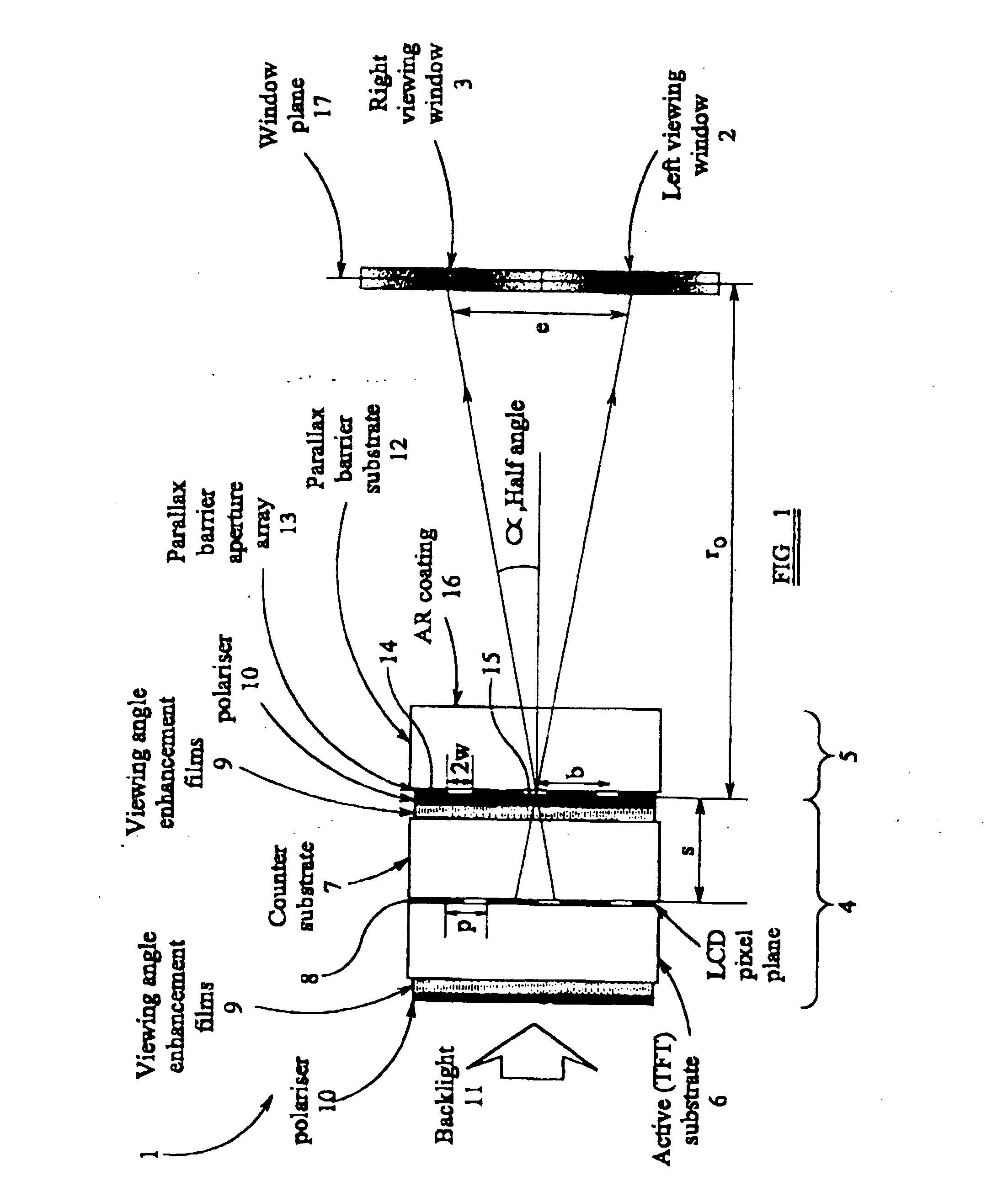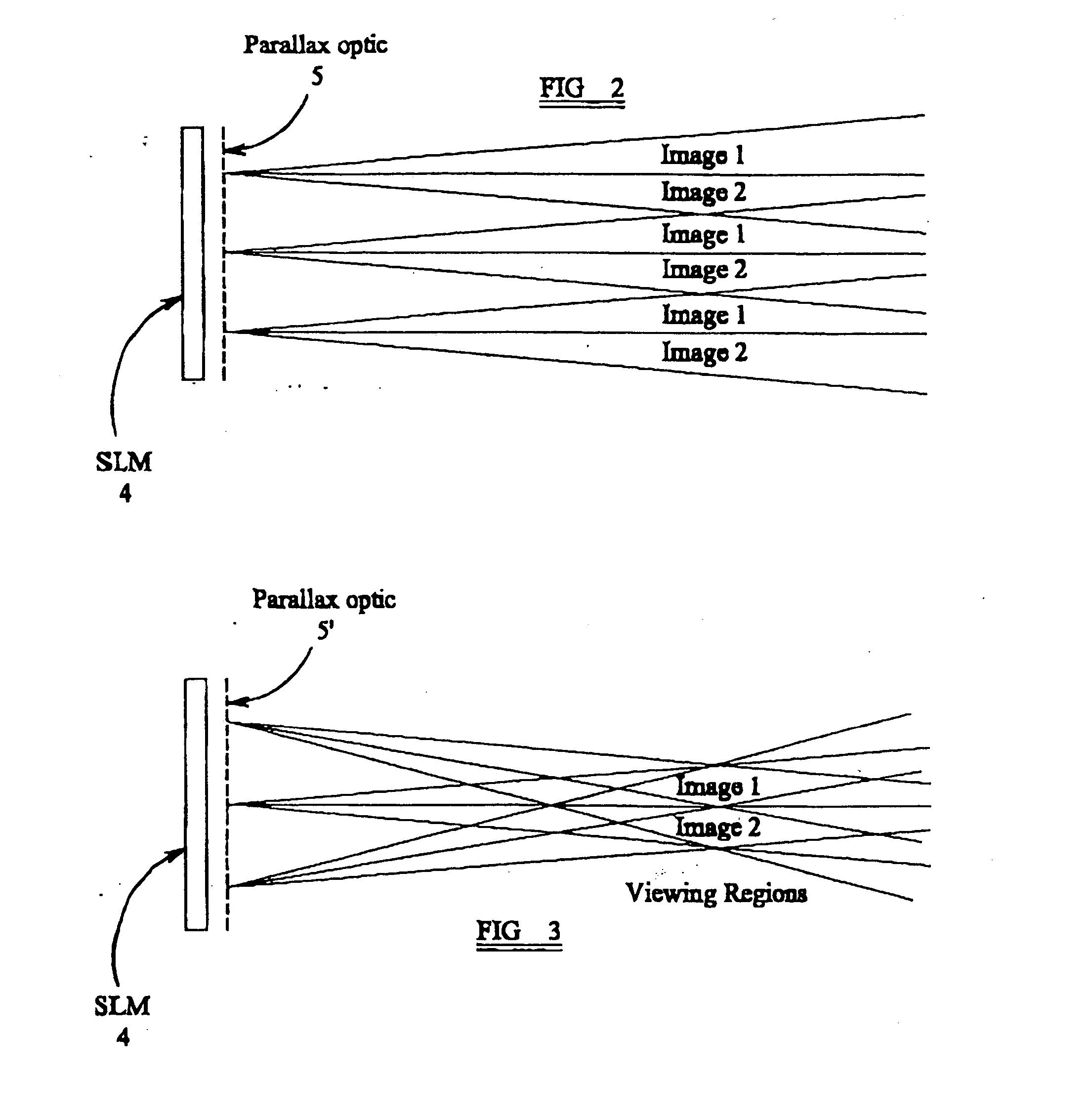Multiple-view directional display
a directional display and multi-view technology, applied in the field of multi-view directional display, can solve the problems of occupying a lot of space, increasing the cost, and requiring a separate display screen for each player, and achieve the effect of reducing the thickness
- Summary
- Abstract
- Description
- Claims
- Application Information
AI Technical Summary
Benefits of technology
Problems solved by technology
Method used
Image
Examples
Embodiment Construction
[0117]FIG. 6(b) is a schematic plan view of a multiple-view directional display according to a first embodiment of the present invention. The display device 58 comprises a first transparent substrate 6 and a second transparent substrate 7, with an image display layer 8 disposed between the first substrate 6 and the second substrate 7. An array of colour filters 18 is provided on the second substrate 7, and the second substrate will therefore be referred to as a colour filter substrate.
[0118] The first substrate 6 is provided with pixel electrodes (not shown) for defining an array of pixels in the image display layer 8, and is also provided with switching elements (not shown) such as thin film transistors (TFTs) for selectively addressing the pixel electrodes. The substrate 6 will be referred to as a ‘TFT substrate’.
[0119] The image display layer 8 is, in this example, a liquid crystal layer 8. The invention is not limited to this, however, and any transmissive image display layer ...
PUM
 Login to View More
Login to View More Abstract
Description
Claims
Application Information
 Login to View More
Login to View More - R&D
- Intellectual Property
- Life Sciences
- Materials
- Tech Scout
- Unparalleled Data Quality
- Higher Quality Content
- 60% Fewer Hallucinations
Browse by: Latest US Patents, China's latest patents, Technical Efficacy Thesaurus, Application Domain, Technology Topic, Popular Technical Reports.
© 2025 PatSnap. All rights reserved.Legal|Privacy policy|Modern Slavery Act Transparency Statement|Sitemap|About US| Contact US: help@patsnap.com



